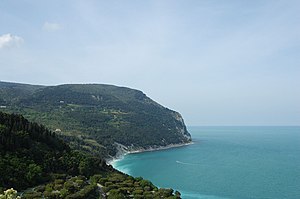Inonsia
Pollava
Banlieueregis Pollava | |
|---|---|
 | |
| Country | Caphiria |
| Regions | 4 |
| Cities | 23 |
| Capital | Heriore |
| Government | |
| • Praetor | Antony Anagnos |
| Population (2030) | |
| • Total | 12,068,534 |
Pollava (Banlieueregis Pollava), is a Province of the Imperium of Caphiria. Pollava has a population over 12 million and its capital is Heriore. Pollava is known for its landscapes, traditions, history, artistic legacy, and influence on high culture. Pollava is well known for its shoe-making tradition, with the finest and most luxurious Caphirian footwear being manufactured in this region. Pollava is traditionally a popular destination in Imperium, with historical cities such as its capital Genate, Lusse, Solymbrogio, and Mussa being among the most popular.
Except for river valleys and the often very narrow coastal strip, the land is hilly. Due to its close proximity to Venceia, there is an extensive transportation network dating back to antiquity that connects the rest of the Imperium to the capital. The longest of these, the Lavorologu, extends as far as Xalen.
Geography

Most of the region is mountainous or hilly, the main features being the Herelaos mountains along the internal boundary and an extensive system of hills descending towards Lake Kiterona. Notably, none of the Herelaos mountains exceed 2,250 meters. The hilly area covers two-thirds of the region and is interrupted by wide gullies with numerous – albeit short – rivers and by alluvial plains perpendicular to the principal chain. The parallel mountain chains contain deep river gorges,
The climate is temperate. Inland, in the mountainous areas, it is more continental with cold and often snowy winters; by the sea it's closer to a traditional Mediterranean climate.

Politics
Administrative divisions
| Region | Cities |
|---|---|
| Voltare Region | Frasine, Raetum, Degangelo, Olentum, Bormigna, Padore, Heriore |
| Navis Region | Casolbigo, Lucino, Regaro, Revia, Argeo, Vivero, D'Artinis |
| Cresta Region | Cistanno, Ulpidum, Dellinduore, Caudinelle, Ovindobbia |
| Olitare Region | Jesola, Stiai, Lazzano, Santalate |
Economy
Prior to the 1980s, Pollava was considered a rather poor region given its proximity to Venceia, although economically stable in some sectors, thanks particularly to its agricultural output and to the contribution of traditional crafts. Today the contribution of agriculture to the economy of the region is less significant and the gross value generated by this sector remains slightly above the national average. Its main products are cereals, vegetables, animal products and grapes. Truffle hunting is popular; although it has often led to 'truffle wars' between hunters due to the imposition of quotas. Olives are also produced and managed by various harvesters.
Since the 1980s the economy of the region has been radically transformed, without however repudiating its rural past. Many of the small craft workshops scattered throughout the rural settlements have modernized and become small businesses, some of which have become major brands known all over the world (Barecchies, Annizzò, Detero). This evolution led to the emergence of 'specialized' industrial areas, which are still profitable: footwear and leather goods, furniture, household appliances, and engineering companies are also to be found thriving in Pollava.
The province continues to draw tourists, whose increasing numbers have been attracted by the rich and broadly distributed heritage of history and monuments, as well as by the traditional seaside resorts.
Demographics
The population density in the region is below the national average. Between 1952 and 1967 the population of the region decreased by 1.7% as a result of a negative migration balance, well above the national average, with a rate varying between 4.9 and 10.0 per 1,000 inhabitants. The population continued to decline until 1971, but in 1968 began growing again. It is estimated that 115,299 foreign-born immigrants live in Pollava.
Culture
The culture of Pollava has been shaped by the fact that the entire region is a collection of small centers of population. There is no cultural giant to be found — no Castra Vetera or Venceia — that might have shaped the cultural and musical expressions of the entire region. Historically, the entire area was home to a great number of monasteries and abbeys in the Middle Ages, institutions that had choirs and were active in the musical lives of the inhabitants. That period is still obscure and is currently the subject of musicological research. In the modern age, the region has a vibrant musical life.

